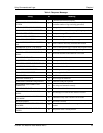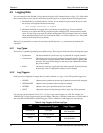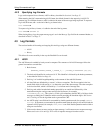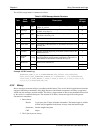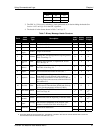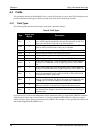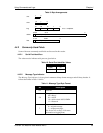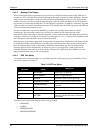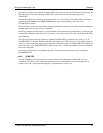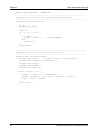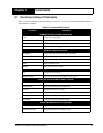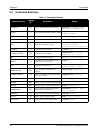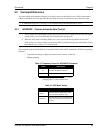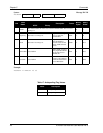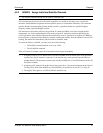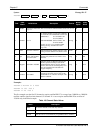
Using Commands and Logs Chapter 4
EuroPak-15a Receiver User Manual Rev 5 41
On start up, and before any satellites are being tracked, the receiver can not possibly know the current time. As
such, the receiver time starts counting at GPS week 0 and second 0.0. The time status flag is set to
UNKNOWN.
After the first ephemeris is decoded, the receiver time is set to a resolution of
±10 milliseconds. This state is
qualified by the COARSE or COARSESTEERING time status flag depending on the state of the
CLOCKADJUST switch.
Once a position is known and range biases are being calculated, the internal clock model begins modelling the
position range biases and the receiver clock offset.
Modelling continues until the model is a good estimation of the actual receiver clock behavior. At this time, the
receiver time is adjusted again, this time to an accuracy of
±1 microsecond. This state is qualified by the FINE
time status flag.
The final logical time status flag depends on whether CLOCKADJUST is enabled or not, see Page 50. If
CLOCKADJUST is disabled, the time status flag never improves on FINE. The time is only adjusted again to
within
±1 microsecond if the range bias gets larger than ±250 milliseconds. If CLOCKADJUST is enabled, the
time status flag is set to FINESTEERING and the receiver time is continuously updated (steered) to minimize
the receiver range bias.
If for some reason position is lost and the range bias cannot be calculated, the time status is degraded to
FREEWHEELING.
4.4.2.5 32-Bit CRC
The ASCII and Binary message formats all contain a 32-bit Cyclic Redundancy Check (CRC) for data
verification. This allows you to ensure that the data received (or transmitted) is valid with a high level of
certainty. This CRC can be generated using the C algorithm shown on Page 42.



